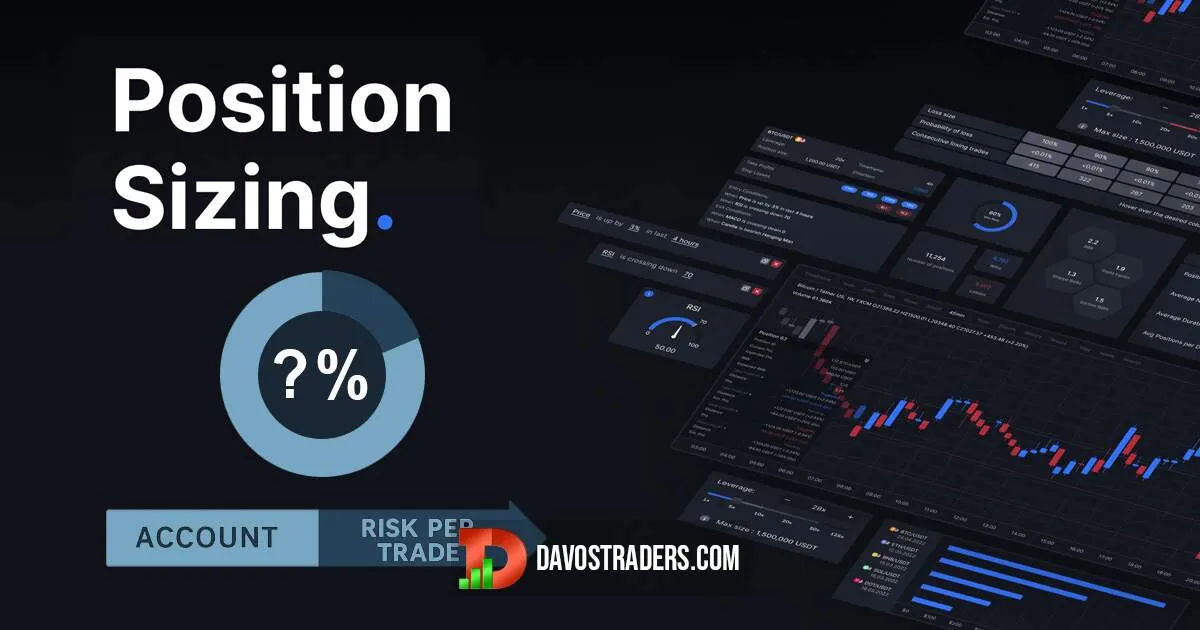Position Sizing in Crypto: How Much Should You Risk Per Trade?

Managing risk is one of the most underrated yet crucial parts of successful crypto trading. While many focus on entry signals or market sentiment, mastering position sizing can determine whether you protect your capital or blow your account.
In this article, we’ll break down what position sizing means, why it matters, and how you can use it to trade smarter, not harder.
💡 What Is Position Sizing in Crypto Trading?
Position sizing refers to the amount of capital you allocate to a single trade. It’s not just about how much crypto you buy — it's about how much you're willing to risk on that trade if it goes against you. This helps you control drawdowns and trade consistently over time.
🧮 Calculating Position Size: The Risk Percentage Rule
A common rule among traders is to risk only 1-2% of your capital on any single trade. For example, if your total trading account is $5,000, you should not risk more than $50–$100 per trade. This way, even a series of losses won’t wipe out your account.
To determine the exact amount to buy:
- Define your stop-loss (how far you're willing to let the trade go against you).
- Calculate the difference between your entry price and stop-loss.
- Divide your maximum risk (e.g. $50) by that difference to get your position size.
📉 Why Position Sizing Is Vital During Market Volatility
Crypto is notoriously volatile. Without proper position sizing, even a single sudden dip can wipe out a large portion of your funds. By limiting your exposure, you ensure that you're not over-leveraged or emotionally reacting to price swings.
👉 We’ve touched on this risk in our post “5 Common Trading Mistakes and How to Avoid Them in 2025”, especially how overexposing your account can lead to panic decisions.
📊 Position Sizing and Trading Strategies
Your position size may vary depending on your strategy. For scalping, smaller and quicker trades may allow for slightly higher exposure due to tighter stop-losses.
On the other hand, swing traders often deal with wider stop-losses and thus smaller position sizes.
If you're still debating between strategies, read “Scalping vs. Swing Trading: Which Crypto Strategy Fits You Best?” to better understand which style suits your risk tolerance and time availability.
⚖️ Tools to Help You Calculate Position Size
There are plenty of free position sizing calculators available online. Most require you to input your:
- Account balance
- Risk percentage
- Entry and stop-loss prices
Using these tools can take the guesswork out of your risk management routine.
Also, if you’re relying on crypto trading signals — whether free or VIP — it’s still your responsibility to size your trades appropriately. Even the best signals won’t save you if you overleverage.
📌 Final Thoughts
Position sizing isn't about being overly conservative — it's about trading like a professional. Crypto markets can be brutal, but with proper risk management, you give yourself the staying power to thrive long term.
If you're using trading signals (like those from our Telegram channel), make sure you apply proper position sizing to maximize gains and minimize stress. Every signal, no matter how strong, should still follow a solid risk plan.
👉 Join our free Telegram channel @davostraders and stay informed with daily insights, trading signals, and updates to guide your crypto journey.
